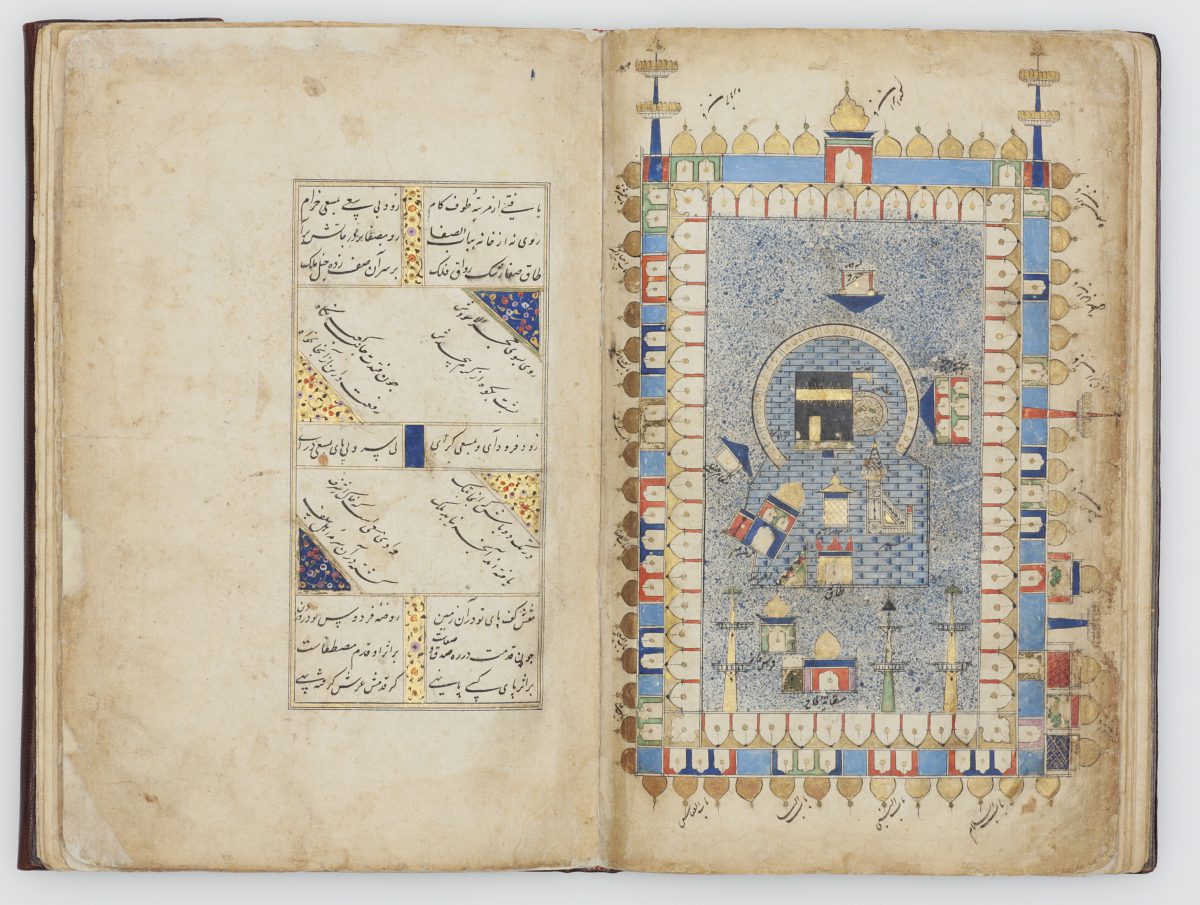



Title: Futuh al-Haramayn (a Handbook for Pilgrims to Mecca and Medina) of Muhyi Lari
Date: dated Jumada al-thani 990 (June–July 1582)
Location: Mecca, Saudi Arabia
Materials: ink, gold, coloured wax and opaque watercolours on paper; contemporary leather binding
Dimensions: 42 folios; 21.6 x 13.9cm
Accession Number: MSS 1038
Other Notes:
The futuh al-haramayn is a guide in Persian verse for pilgrims on the hajj, listing and illustrating the stations of the Pilgrimage and the rituals to be observed, together with the customary prayers and offerings. It was the work of the polymath Muhyi Lari (d 933 AH/ 1526 or 1527 AD) who later dedicated it to Muzaffar ibn Mahmudshah, the ruler of Gujarat. No early illustrated Indian copies are known, but later in the 16th century it was widely copied in Ottoman Turkey, both in Istanbul for the sultan’s library and in the provinces. These all share one interesting feature: the use of a coloured waxed ground on the illustrations of Mecca and Medina. This is paralleled in scrolls of the period, issued to attest proxy pilgrimages.
Script:
written in nasta‘liq
Bibliography:
J.M. Rogers, The Arts of Islam. Masterpieces from the Khalili Collection, London 2010, cat.285, pp.250–51.
Zoom
Close

Create your own collection of artworks that you can print or save as a PDF. Please enter you email to enable feature.
Small Flask | JLY 1075
Has been added to your collection.
TIP:
You can now access and view your collection from the main menu at any time.